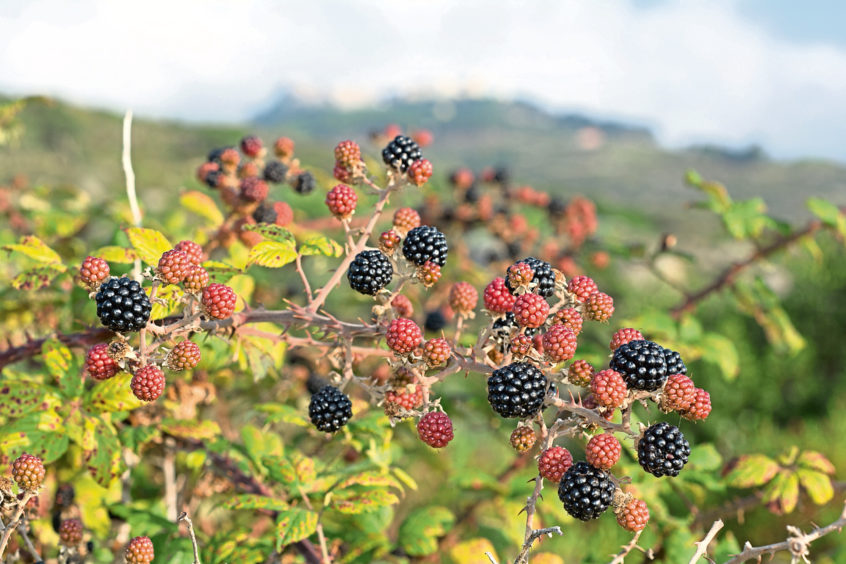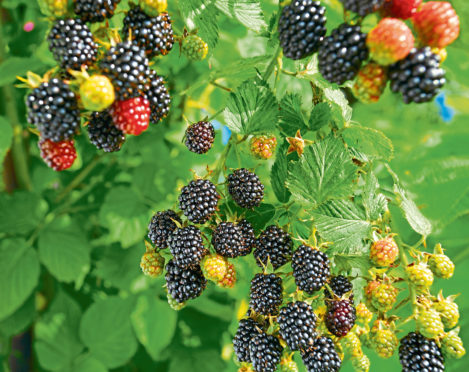Many ‘microspecies’ of bramble occur in Britain, each one differing slightly from each other in terms of fruiting time, size, texture and taste.
Brambles hanging heavy with their autumnal fullness by the shore of Loch Lubnaig; some glistening black, others hued like ruby wine as they hasten their way to ripeness.
The temptation is too much, so I pluck one, then several more, popping them into my mouth to savour their wild sweetness. My tongue tingles with delight and I wonder whether bank voles, foxes and other wild creatures experience the same pleasure when feasting upon this bounty.
Well, of course they do, I conclude, for sweetness is an irresistible attraction for all animals; not just for the taste, but also as a provider of energy. Sugar has played a profound role in providing human gratification since the dawn of time, and I’m sure that applies equally to other creatures.
The importance of brambles to our native wildlife soon becomes obvious, for a bit further down this Trossachs track I find a fox dropping, purply-black in colour because of the number of berries it has consumed.
Other berries shine out at me; a scarlet-dripped rowan tree, and rose hips, still glinting from the recent early morning drizzle. These red berries are an invitation to dine, with birds and mammals benefiting from the nutrition, and the bush or tree profiting by ensuring its seeds are spread far and wide by being deposited in animal droppings.
Purple-flowered knapweed abounds by the trackside, an unsung hero among plants, so beautiful and a life-giver by providing late season nectar for hoverflies and bumblebees. Almost every knapweed plant I see has nectar-seeking insects browsing upon their indigo frilled flowers.

In among the knapweed is a scattering of Devil’s bit scabious, showing-off their exquisite pincushion violet-blue flowerheads. It, too, is a magnet for insects and is an important food plant for caterpillars. According to folklore, it is so-named because the Devil was so furious at the success of the plant in curing ailments that he bit away part of the root.
A peacock butterfly swerves by my body and alights upon one of these flowers. Give an artist a blank canvass and it would take a genius to conjure the natural patterned wizardry of a peacock’s wings; reds, blues and shades in-between, with four striking spots thrown into the mix that look just like eyes.
I find a small path by the track that leads down to the lochside, a temptation impossible to resist. I sit for a while on a narrow shingly beach, absorbing this landscape of shimmering water, forested slopes and a high ridge above the loch.
The honking calls of Canada geese drift across the breeze and I spot a goosander fishing out on the water. There is a distinct sharpness to the air, the smell of autumn and the turning of the seasons. The peacock butterflies I had just seen will soon be entering hibernation, and their brazened colour will become all but a distant memory.










